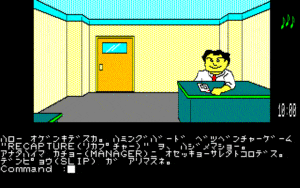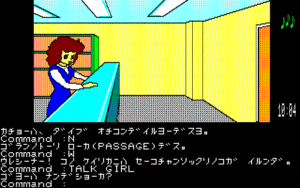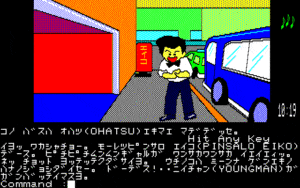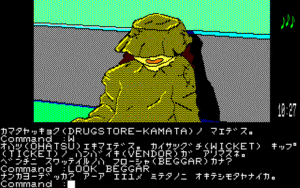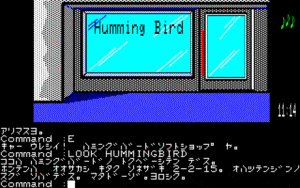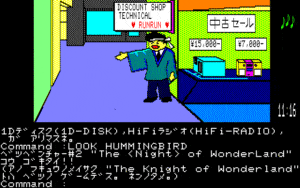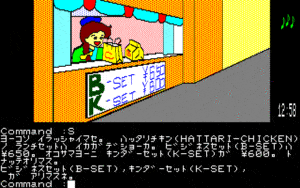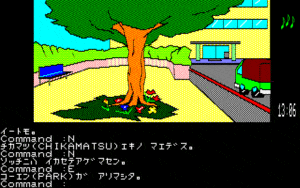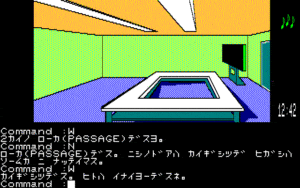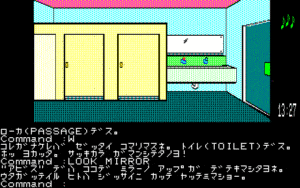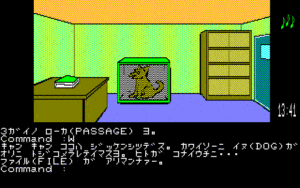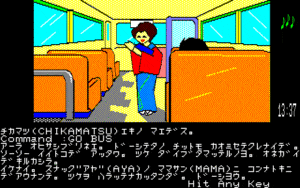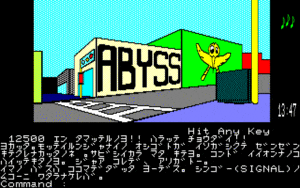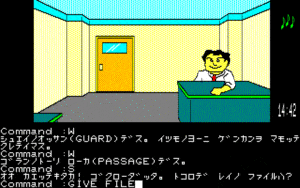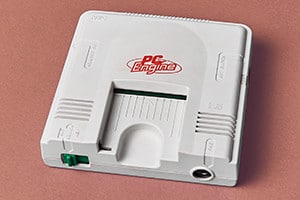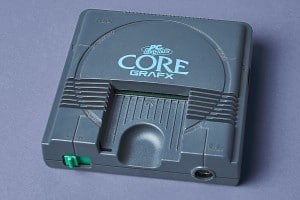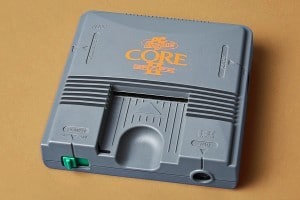Since springtime earlier this year, we’ve been collaborating with the good folks at NHK World to produce a documentary about the Game Preservation Society and our work. After a lot of filming, the final piece aired on 28 November, 2016.
Titled “Inside Lens: Game Preservation -The Quest-,” the documentary is now available at the following URL: https://www.gamepres.org/en/media/
Among the many things that Japan has to be proud of is its games. From Space Invaders, which became a social phenomenon, to the global icon Super Mario Bros, games have long been a critical part of the country’s pop culture output. This documentary we’ve collaborated on details our work in preserving Japanese games from the golden age, as well as the history behind them, in the hopes that they’ll remain accessible for future generations.
Not many people necessarily realize this, but as the foundation of video game culture as we know it today, older games from the 1970s and 1980s are now at serious risk of deterioration. Not only that, but more and more materials related to their creation and development are disappearing, too. Without immediate intervention, within a few years, these important games across all formats, arcade, PC, and console alike, will start to break down for good and it’ll become impossible to bring them back to life. This, in essence, is why the Game Preservation Society was formed, in order to do something about the situation and help avert disaster.
In this documentary, you can see the members of our society who volunteer their time to our cause and see first hand how they’re helping to preserve old video game culture, whether it’s by restoring old games, engaging in archival work, or something else altogether. But as Kazumi Takai of Takai Shoukai discusses during the program, game preservation takes real money in order to do right. While in an ideal world these old games and their assorted materials would be protected by the government as part of museums, short of that level of support, it’s up to us as individual citizens to do what we can to keep that legacy alive in the meantime.
Should we fail to do so, all these games and materials risk going the way of Japanese ukiyo-e art and evaporating from the country forever. As Joseph Redon, the head of the Game Preservation Society, puts it at the end of the documentary, “Japanese people have a different sensibility and that’s good. Only the Japanese could make certain games. I think it’s important that they go on making them and draw on their own history. Games are a heritage that must remain in Japan for the Japanese and indirectly for everyone else, as well, because from all the magnificent things they make, we, too, will benefit.”
The work of the Game Preservation Society has only just begun. How far we’ll ultimately be able to go in preserving Japanese games, works that are deeply embued with those unique sensibilities, will depend on how our organization is able to grow and evolve in the months and years to come. It’s our hope that this work we do in appreciating these old games will inspire a cultural movement within Japan and doing that will take the dedication and hard work of passionate people living within Japan to make happen.
Some of you reading this might be aware of the Cool Japan initiative that the Japanese government sponsors, which is an effort to promote various Japanese subcultures to the rest of the world. While official support for manga and anime is strong, games so far haven’t been so lucky. Time is running out for many games and their materials to stay in one piece and if more isn’t done to address the issue sooner rather than later, it’ll be too little, too late for some of them.
The Game Preservation Society is a non-profit organization run by volunteers who graciously dedicate their time and energy to making sure these games continue to have a future for many years to come. We will continue to work tirelessly in our preservation efforts and find a way to give these games a framework for official, enduring protection, much like books, art, documents, and film are afforded that protection through the work of museums, archives, and libraries across the world. And to make that happen, we need the help of each and every person who can pitch in at any capacity, big or small, because to us and surely to all of you, Japanese games are worth it.
To that end, there are many ways that you can help. You can, of course, spread the word about the Game Preservation Society and our work to people who are interested in game history and culture. Exposure is always important for a small operation like ours. But, in the interest of being frank, just as important as exposure is money so that we can continue to have the funding to go about our work.
As the documentary depicts, the materials that we acquire are each preserved and stored in their own special containers that are designed to help combat deterioration. In a nutshell, they’re organized by the type of medium (e.g.: paper, magnetic, etc.) and the containers are designed to counteract environmental factors that can exacerbate degradation. The flip side is that these containers, unforunately, don’t come cheaply. It’s not just the containers that cost money, either; every piece that enters our archives is tagged with a QR code and the cost of the materials that go into that process adds up when working in large volumes like we do.
Some games, like those that rely on the DECO Casette System, are also difficult to repair and can require special tools to get the job done. That also costs money and in cases where said tools are no longer being manufactured, we have to recreate them in-house. While we’re lucky to have a staff full of passionate volunteers, without a steady stream of money to fund our work, we can’t realistically continue it for the long haul.
As such, we’re asking those of you who understand our mission and wish to support it to please consider registering for a yearly donation. For a one time per year amount of your choosing starting at 3000 yen, you’ll be helping to ensure our long-term survival as an organization. Not only that, in exchange for your generous contribution, we’ll send you newsletters discussing our ongoing work, as well as financial statements that show just how your money is being put to good use.
We as game players, fans, and historians cannot rest on our laurels and be complacent in assuming that this work will inherently get done one way or another. Japanese video game history needs people who are willing to fight for it and protect it for generations to come. With your donation, you’ll be making a statement that you want our important work like ours at the Game Preservation Society to continue and play a crucial role in ensuring these games don’t get lost to time.
Thank you for your support.
* Those interested in pledging contributions may do so here. *
Translated by Thomas James

Category Archives: Posts
The Holy Grail of Humming Bird Soft Successfully Preserved
Being someone who owns fewer than fifty PC games and barely knows how to modify hardware or even code in BASIC, I owe the opportunity to write this article largely to our president Joseph, with whom I connected with through Humming Bird Soft’s adventure games.
I absolutely adore games and want to make sure that they are lovingly preserved for posterity. On that note, I would like to present this article in commemoration of the Game Preservation Society’s successful preservation of Recapture, a game released by Humming Bird Soft for the FM-7 series systems.
■ About Humming Bird Soft
At the mention of Humming Bird Soft, some readers might remember games like Record of Lodoss War or something older like Laplace’s Demon. They are absolutely right, but in addition to that, Humming Bird Soft was also the first company in Japan to produce adventure games with a certain level of quality. The first of these was a 5-inch disk for the FM-8, titled The Palms (priced at 11,000 yen at the time).
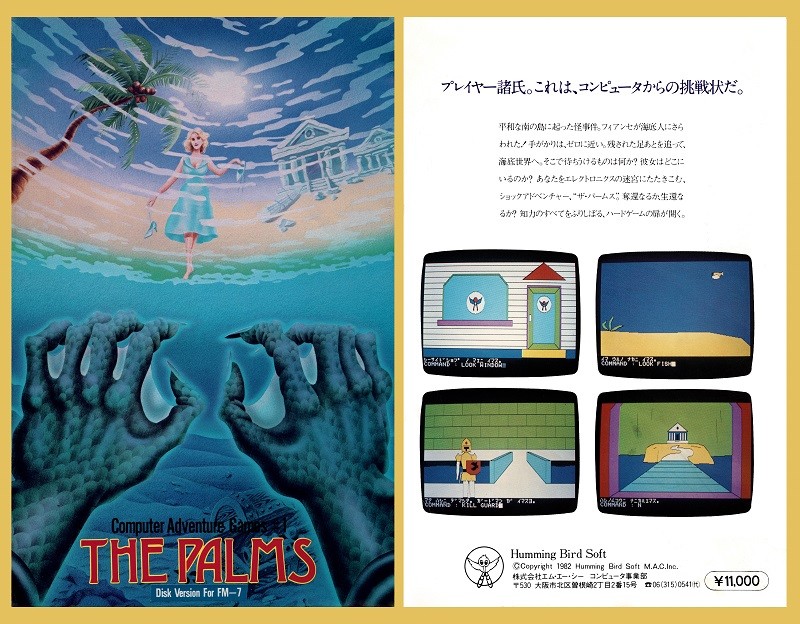
Before The Palms, adventure games mainly took place in locked-room scenarios, like in Mystery House by Microcabin (a Japanese clone of the famous Mystery House by Sierra Online). The Palms gave the genre a different take by presenting a game world that expanded outwards, from the neighborhood reminiscent of the Shonan Beaches, to the ocean, to Smoopa, the underwater city. In addition, it was in color, which was groundbreaking at the time. Sales commenced during January of 1983, when the market for PC games was still young, and The Palms raised the bar high for domestically produced games.
■ Recapture
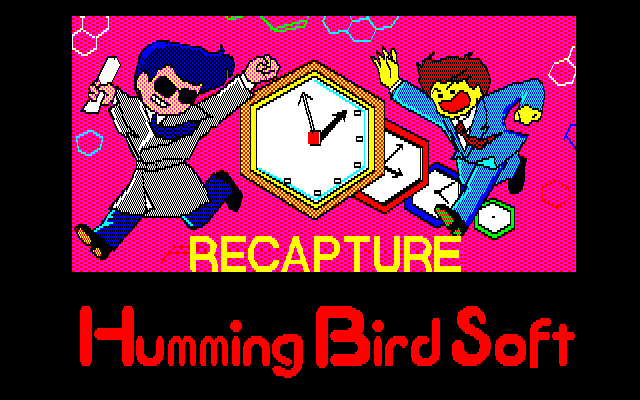
Recapture was released in 1984 as the first title of the Humming Bird – Another Venture #1 series (9,800 yen, reduced to 5,800 yen in 1985). True to the spirit of being “Another Venture,” it went in a different direction from the fantasy settings of previous Humming Bird Soft games.
The protagonist, a researcher at Fly Pharmaceuticals, is a young man who is putting all he has into a “100% Perfect Male Contraceptive” (according to the manual). He succeeds and creates the male contraceptive “Kondoh-Muyo” (literally “condomless”). However, rival company Mosquito Pharmaceuticals will not take this lying down and steals the research files from our protagonist while he is out drunk while celebrating. What is our protagonist to do? The press conference is today at 4:30 p.m., and if he does not return by then, it will spell the end of Fly Pharmaceuticals. Thus the story begins where you as the protagonist have to RECAPTURE the missing files. This prologue is included in the manual in comic-book style; give it a read if you get a chance!
■ The Treasure Trove of Accessories
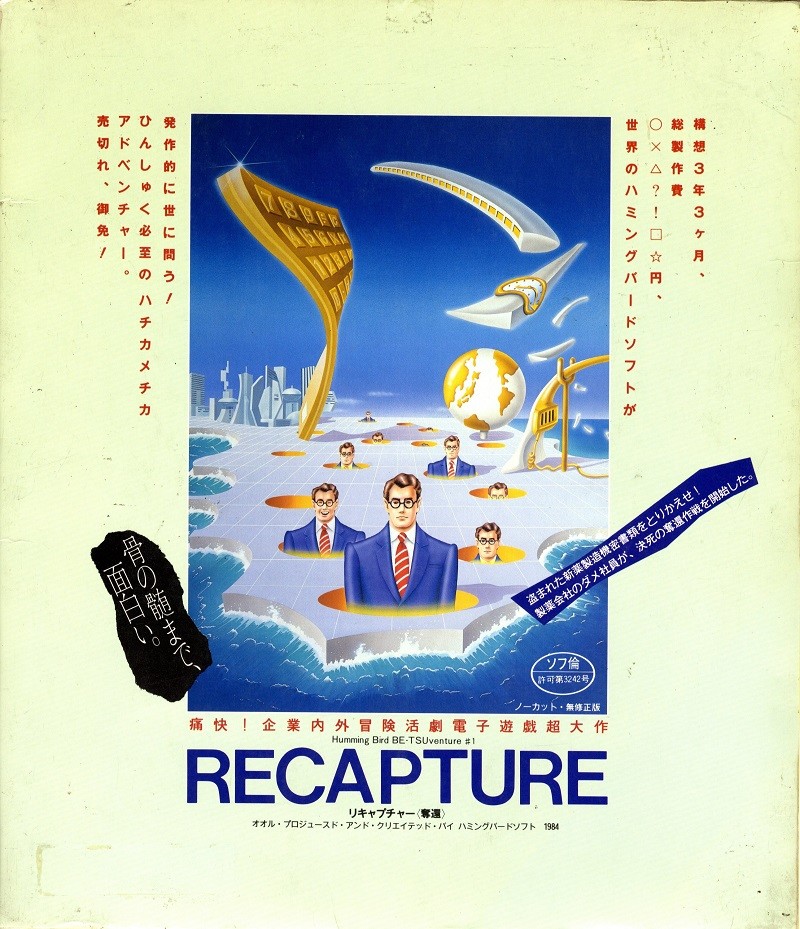
For PC games in 1984, it was standard practice to have a slightly well-designed box and a simple manual, but for Recapture, there was an elaborate set with a Dali-esque package, a comic-styled manual, a case resembling a medicine package, and a piece of cardboard with “This is cardboard” written on it. Perhaps they were emulating Infocom, which had various accessories included with the text adventure games they published for Apple and others. Hudson Soft even included soil in their package for Dark Focus: The Case of the Bunnygirl Murder (1986).
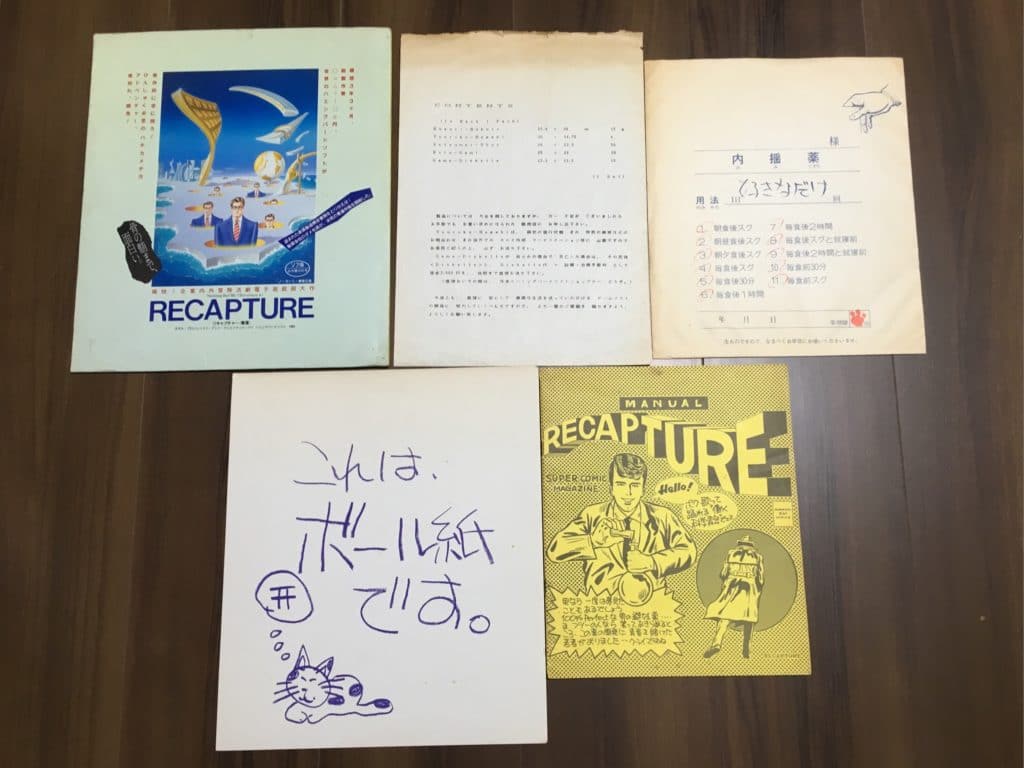
Recapture Accessories
■ The Story
To avoid spoiling the game by revealing too many details, I’ll just introduce each area briefly with a few screenshots.
This is Fly Pharmaceuticals, where the player works. It’s fun to proceed through the game, as it’s not weighed down by too much text. Your first destinations are the accounting department and the lab. Commands like F***, BAKA (idiot) and AHO (fool) which aren’t normally functional in such games will show you a game over screen with a special scene. It’s well-worth trying out!
If you take the employee bus, you’ll get to Ohatsu station. Once you get off, you’ll encounter a street hawker trying to get you to visit a “pink salon” (brothel). While Humming Bird Soft had been producing tasteful games up until that point, one of the distinctive features of Recapture is that it doesn’t shy away from lewdness throughout the game. This street also has a drugstore and department store. If you’re not skilled at finding a great bargain, you might have a hard time ahead.
Taking a train from Ohatsu station enables you to get to Tokube station. What do you know! There’s a Humming Bird shop on the street staffed by a single employee. This game has a rich selection of functional commands, if you key in “LOOK HUMMINGBIRD” in front of the discount shop, you will get some information about the second game in the Another Venture series. There’s a lot available for sale on this street, and you can get some stuff through conversing with NPCs. It’s starting to feel more like an adventure game!
Next is Chikamatsu station, the station closest to Mosquito Pharmaceuticals. There’s two ways to get in, if you’ve cleared the game before with one method, give the other method a go! (One method is in the hint book but is quite hard to decipher.)
This is the second floor of Mosquito Pharmaceuticals. The two main goals of this area are to get a staff ID card and to RECAPTURE your missing files. The first goal of getting the staff ID requires some puzzle solving. Your actions regarding something passing across the meeting room is the key.
The third floor and the stairwell comprise the later half of Mosquito Pharmaceuticals. It’s time to use the items you bought outside Tokube Station! Beware, as the file in the lab is fake, but without it, you won’t be able to get the real one (which is called the HONTO-FILE, or “real file”).
After you’ve RECAPTURED your file, it’s not the end yet. You’ll still need to deliver it to your manager at Fly Pharmaceuticals. However, Humming Bird adventure games aren’t so easy! If you take the wrong mode of transportation, it’s Game Over. The street hawker from before (remember him?) is also back to block your way. This is your last test of wits; have a look at the items you have and solve the puzzle!
■ Hint Book
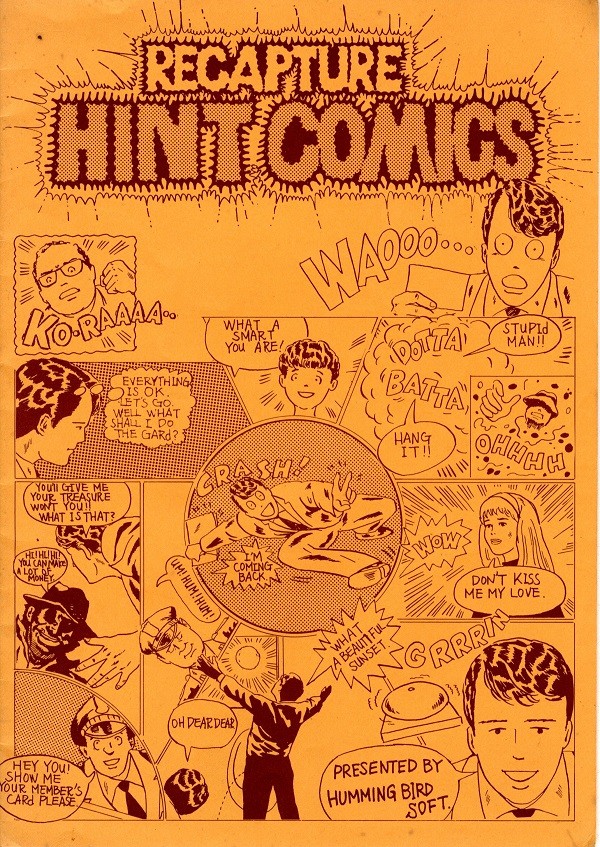
The Recapture Hint Book, which appears when you key in “HINT” during the game (18 pages, 1,000 yen, sold separately), has been obtained by the Game Preservation Society. It presents the story from beginning to end with the same style as the manual, and will help you clear the game without any problems
Recapture is a command-line adventure game, a genre which enjoyed extremely brief popularity from 1983-1984. Command-line games meant that the player needed to key in what to do and how to do it, using Katakana or English. In addition, functional keywords were limited, so most people have probably experienced a cold reply like, “You can’t do this.”
On the other hand, after being stuck forever on a particular scene, finding the right keyword and watching the scenes and story unfold smoothly from there is like a drug. You can’t get this from multiple-choice text adventures. It’s a lost genre.
In addition to Recapture, our Society aims to preserve all existing games, including those that have been lost to history. I hope that anyone who can will lend a hand.
Game Preservation Society, Takayuki KOMABAYASHI
Translated by Ming TEE, edited by Devin MONNENS
*Package and game images belong to the original copyright holder.
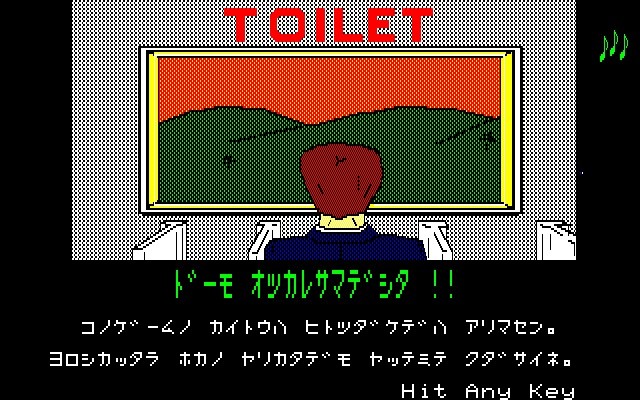
PC Engine Creator Memories
No Memories Left Behind
When you think about the subject of game preservation, what’s the first thing that comes to mind? A lot of people view it as amassing huge game collections. I should know because I used to think about it that way myself.
Here’s the problem with that mentality, though: if game preservation is defined purely in relation to game collecting, then what criteria should be used to determine which games make the cut and which don’t? When I first met Joseph Redon, the chairman of the Game Preservation Society, I asked him just that, about how we were supposed to decide who would pick the games to preserve for future generations and how would they would then make those calls. The answer that he gave me really stunned me.
“Every game should be preserved,” he answered. “After all, there might well be games that aren’t well regarded today that will go on to be better appreciated and understood in the future. That’s why it’s also important to not just preserve the games themselves, but also their packaging, their manuals, even the techniques and memories of people who played them during their heyday.”
I remember thinking it was a really tall order trying to preserve literally every game, albeit one worth pursuing. If such a vision was ever going to be achieved, it certainly couldn’t be done alone; it’d take the help and support of a lot of dedicated people to make it a reality. Knowing that, while I didn’t have anything special to contribute in terms of skills or even just the games I owned, I decided to join up with Joseph and his team anyway to try and make some sort of difference.
My Senior Coworker: Designer of the PC Engine
Years and years ago, I used to work at NEC Home Electronics and just by chance, I happened work with someone who was involved with designing the PC Engine. It’s not every day you meet someone who helped bring about such an iconic piece of video game hardware and it’s been something of a lingering dream of mine for a long time to be able to talk to them about their involvement.
I first learned about the connection soon after joining the company. Back then, however, I had no published experience as a writer, let alone conducted an interview before, so I sat on that desire to interview them for a good 20 years or so. But after Joseph told me about his mission to preserve every game to such a definitive degree, I felt it was time to act and make that interview happen, seeing as how, again, preserving memories about games is just as important to us at the Society as preserving the games themselves.
The timing for doing so couldn’t have been any better. This coworker of mine recently retired at long last and while attending their farewell party, I finally summoned the courage to ask them if they would be willing to discuss their history with the PC Engine. Luckily for me, they graciously accepted. The main thing I decided to focus on in the interview was how the planning and design process went for the PC Engine from NEC’s side. Much has been written over the years about the technology that Hudson contributed to the system and while that’s all well and good, I thought it was important to also discuss NEC’s side of the story as a collaborator, too, while the people involved with it are still around to talk about it.
I sat down with my former coworker one chilly autumn day in Shibuya in 2015 to discuss times long past, the clouds above threatening to rain. The text of that interview follows below. One thing to note, however, is that this coworker wanted to remain anonymous, so for the duration of the interview, they’ll be referred to simply as “K.”
Enjoy!
■ K’S Involvement with PCs and Games
Numa: Were you interested in computers and games as a student?
K: I was, yeah. I first came into contact with NEC working part-time for them writing demo programs and technical manuals designed for programmers. After I graduated from university, I ended up joining NEC full-time and from there, I was assigned to their PC division.
Even when as a high school student, K was really into computers. He’d read all sorts of magazines about them, not just ones published in Japan, but from around the world. And after they started going to university, they joined a research society that was dedicated to amateur radio and computers. Not long after they entered that school, NEC released the PC-8001 and they went out and bought it immediately.
Numa: So you were already interested in PCs just as they were starting to take off.
K: Somewhat. If we’re being technical, I wasn’t exactly there from the very beginning. I missed the first generation of them, I guess you could say, by about three or four years.
Numa: What about games? Were you into those at all? What did you think of arcades back then?
K: Oh yeah, I was really into games, too. I used to go to arcades a lot to play stuff like Space Invaders. Those games could really eat into your wallet if you let them, so after buying that PC-8001, I actually made my own block-breaking and mahjong games, which was a lot of fun.
■ The New Guy at NEC
Numa: What sort of work did you do once you joined NEC full-time?
K: Like I mentioned before, I was initially assigned to work in their former PC division. I wanted to help make hardware, so I’d go around talking to third-parties about a variety of things, like what architecture we should go with next, whether the sound needed a boost. Things like that.
Numa: What about sprites? What did you think about the limitations and how to improve those capabilities?
K: When I first started, we were bound by two things: sheer cost and the limit of large scale integration technology. This meant that we couldn’t have sprites that overlapped one another. We had it by the time we got to the PC-88VA since that was a 16-bit PC, which had a modest sprite architecture powering it.
Numa: Did you play the Famicom at all when that came out?
K: Definitely. The company bought one as soon as that was out and I messed around with that, although that was mostly because it had the word “computer” right in the name, I’ll admit. (Laughs.) Of course, I ended up buying one for myself, too.
To provide additional context to these remarks, when K first joined NEC, the first half of every work year at their division was spent on product planning, with the remaining time afterwards to doing programming for systems and other related areas. In 1985, their third year at the company, NEC’s PC division was merged with NEC Home Electronics, with K subsequently assigned to their personal electronics section afterwards.
As the name NEC Home Electronics would suggest, that portion of the company was concerned with consumer level electronics, giving people like K easy access to video game consoles to play and examine during work hours. It was also around this time that the seminal Super Mario Bros. also came out, turning up the heat up on the nascent Japanese home video game industry.
K: I don’t think this has been widely reported over the years, but in 1985, in a lone room inside its old headquarters, NEC set up a taskforce dedicated to getting the company into the game console business. This taskforce was made up of four people in all: myself, a member from the sales team, and two other people. The four of us spent about three months, all told, looking into what it would take for the company to enter the console market.
During that time, we examined a lot about the Famicom, why it was so successful, what its weaknesses were, the business model behind it, things like that. In the mornings, we’d play Super Mario Bros. (Laughs.) Then in the afternoon, we’d go around talking to developers and publishers as we tried to formulate our battle plan. Not only were we trying to figure out what sort of machine we should make to surpass the Famicom, but what sort of strengths did we have as a company that we could put into this machine to really make it shine.
When it came to our business model, we came to the conclusion that we couldn’t just reuse our existing practices with PCs part and parcel. Instead, we needed to bring in developers more closely and get them to work for our platform under a royalty-based system. On the hardware side of things, the easiest way we figured the system could stand out in contrast to the Famicom was by providing superior graphics and audio hardware so that developers could express themselves better. Given that NEC Home Electronics was also involved in helping to establish CD-ROMs as a storage medium, we also decided it’d be worthwhile to have our machine support those, as well.
Numa: That’s amazing to hear you were all thinking of using CD-ROMs in the system as early as 1985. That’s really ahead of your time! Did you guys set out to execute your plans on entering the industry after deciding on all that?
K: Yes and no. At its heart, in those days, NEC was still a device and equipment manufacturer at its heart, so for us, making a console back then meant that we needed to find outside collaborators on the processor and software side of things. So after the taskforce was disbanded, upper management at the company spent about a year seeking out partners that would be up to the task.
Luckily for us, Hudson was also engaged in similar activities as us at the team, so we teamed up with them and Seiko Epson to get the job done. Once we had those two companies on board, that was when we got really serious about getting into game consoles, at which point I came back to help with more investigatory work.
Having Hudson on board in particular was important to us. They already had experience developing games for the Famicom and knew that system inside and out. We figured that by combining that knowledge with our CD-ROM technology, we could create a force to be reckoned with in the marketplace.
■ Planning and Developing the PC Engine
Numa: I guess now’s as good of a time as any to ask if you could clarify the meaning behind “PC Engine” as the system’s name. I know I read somewhere in an article before that the “Engine” part refers to how the console is structured around its hardware core. But does the “PC” part refer to computers like what NEC was working on?
K: More or less, yes. PC, of course, was meant to refer to personal computing. It was part of the name because we wanted our machine to be about more than just about its games, to be a big part of people’s day-to-day life.
Numa: A lot of people fondly remember the PC Engine for the quality of its arcade game ports. Was this something you guys deliberately planned for when formulating the system?
K: That was more of a consequence of everyone at NEC wanting to push CD-ROM technology than a deliberate attempt at courting arcade game developers. It was a question of how we could clearly show consumers that our hardware was superior to the Famicom without making the PC Engine prohibitively expensive to produce. We gave the system what we could to justify the CD-ROM support, which in turned happened to make it friendly to arcade game ports, as well.
Numa: It’s definitely a distinct approach when you compare the PC Engine to the Mega Drive, which was more directly based on arcade architecture at the time.
K: The thing about arcade hardware back then was that it used expensive memory modules willy-nilly, but if you tried doing that with consumer hardware, it’d make the purchase price jump up considerably. When it came to the architecture behind things like how sprites on the PC Engine worked, that was Hudson’s work and in my opinion, their insight gave us the best hardware design on that front that we could ever hope for at the time.
Numa: Even still, considering the system sold for 24,800 yen, I remember thinking it was an expensive piece of technology, even more so than the Famicom back then.
K: It’s worth pointing out that even at that price point, we weren’t making any profit on the hardware. Software royalties actually helped us lessen the blow. If we had tried to recoup our research and development for the hardware directly through the console, I bet you it would have come in at somewhere around 50,000, maybe even 70,000 yen.
■ Post-Launch PC Engine Hardware
Numa: I think one of the things that makes the PC Engine so fascinating today is how many different variations just based on the core console there are. Were things like the SuperGrafx designed with the Mega Drive and Super Famicom in mind?
K: Not particularly, truth be told. NEC in general had a history of providing different grades of hardware from low end, entry level stuff to more high end products that were designed for enthusiasts. Things like the SuperGrafx were essentially an extension of that philosophy.
Numa: On a similar note, one thing I always found curious was why you could find PC Engine hardware embedded in things like Sharp’s X1 Twin, but not in any of NEC’s own computers. Why was that?
K: The problem with integrating something like a PC Engine into a more typical computer is that you have to develop multiple motherboards in order to properly accommodate the different hardware on both ends. Our idea to get around that was to integrate the PC Engine hardware inside a PC monitor instead and bypass the issue altogether, which we did with the PC-KD863G. In the case of the X1 Twin, I’m pretty sure Sharp had the two sides operate in isolation of one another in order to circumvent that same issue.
Numa: The LD-ROM² is also a really interesting beast. That was a Pioneer product, but I think NEC Home Electronics also put it out, too. What was the thinking at NEC behind those sorts of collaborations at the time?
K: By the time the LD-ROM² came out, I wasn’t involved in such things anymore, but generally speaking, NEC was just the sort of company that would give most anything a shot if they had the means to do so. In the post-Famicom age especially, they were really gung-ho about those sorts of experiments.
Numa: Was there a time during your work on the PC Engine that you recall as being especially exciting for you?
K: Hmm… Not that it wasn’t an exciting time to work on it, because it certainly was, but the thing that sticks out to me about the PC Engine looking back on it now is how it slowly, but surely grew up to be its own thing in the world of video games. I mean, eventually, a number of magazines were founded that were dedicated to it and it got more and more exposure on TV over time.
Numa: I’m sure you must be proud of that.
K: I am, but the PC Engine only took up about a fifth of my career. (Laughs.) The bulk of it was still in PCs.
Numa: I think most people would jump at the chance to devote even that much of their career to something like that, you know! (Laughs.)
While their work on the PC Engine might not have been their primary focus in the grand scheme of things, it’s not the only game-related hardware with which K was involved in creating. They also helped with planning on the PC-88VA and wrote its BASIC language interpreter. People who know their PC history will know the PC-88VA as a 16-bit computer with sprite functionality embedded in the hardware, making it a rather game-friendly computer.
Numa: After it’s all been said and done, do you think NEC made the right choice by getting into the game hardware business?
K: I’d say so, yes. There’s certainly a long history of turning PCs into video game hardware in general. The PC Engine wasn’t even our first real foray into that arena in a sense. The PC-8801mkIISR before it was certainly built with video games in mind.
Numa: That’s a good point. In that sense, the PC Engine is a spiritual successor of sorts, part of NEC’s computer lineage.
■ Post-Launch PC Engine Software
It goes without saying that you can make the best game hardware in the world, but it’s nothing without a good lineup of software to back it up and the PC Engine was no different. NEC wasn’t content to leave actual game development system solely to third parties. To that end, it did things like establish NEC Avenue in order to make its own mark on the platform. Nevertheless, in addition to Hudson’s significant contributions to the system, when it came to third parties, companies like Konami and Sega were also critical to the success that the platform enjoyed.
Numa: Back when the console wars were still raging, I was a Mega Drive fan myself, but I’d be lying if I said I wasn’t jealous that the PC Engine had some heavy hitters like Gradius in its corner. It felt like Konami only ever put out its best work on that to a degree. (Laughs.)
K: You’re not wrong. Konami came on board by way of Hudson, who they were plenty friendly with and shared deep business ties. During the PC Engine days, NEC ranked and prioritized its third party developers in various ways. Konami was considered to be among the top of the heap and got really preferential treatment when it came to the contracts we shared with them and the like.
Numa: Sega also had a noticeable presence on the PC Engine with some of its tent pole titles like Space Harrier.
K: Games like that were what NEC Avenue tended to take on. If, say, we couldn’t risk putting a game out through our main brand or something other circumstantial reason prevented us from more directly putting something out, then we’d turn to NEC Avenue and have them take the project on.
■ The Convergence
While the PC Engine managed to carve its own place in the marketplace, eventually, change was in the air as the industry transitioned into a new generation of hardware. In 1991, K was put in charge of the PC Engine Duo, a hardware revision designed to be essentially the complete and total package for the PC Engine experience. After helping plan out what would come next for the system after that, they returned to working at NEC’s headquarters.
Meanwhile, in the wake of NEC’s PC-88VA, the company sought to collate its efforts in 16-bit computing with the realization of the PC-9801. For their part, K was once again involved in planning the PC-98DO, which was backwards compatible with PC-8801 programs, in turn helping the company unify the resources it had built up for its previous generation of computing hardware.
Numa: The concept of the core structure for the PC Engine had a lot of potential, I feel like. Was there anything more you wish you could’ve achieved with it if you’d had the opportunity?
K: Overall, I think we did a good job of showing what the PC Engine could offer as an expandable computer terminal of sorts for homes. But, I will admit that I’d wanted to give it additional communications capabilities, like how Nintendo managed to make the Wii an early networked device that worked within the confines of the living room.
The problem on our end was mostly one of timing. During the PC Engine’s life cycle, computers were moving away from directly communicating with one another to operating over more widespread networks and ultimately the Internet. We were just a little too early to create a machine that could both be hooked up to a TV and readily do that sort of networked communication.
Numa: This is just a hypothetical question, but if the PC Engine had fared better overseas, do you think NEC would’ve committed to making a successor to it?
K: The main reason why there was no proper successor to the PC Engine, to put it simply, is that we just weren’t able to come up with a polygonal graphics architecture and accompanying development environment for a console that developers would find compelling. It wouldn’t have been enough even to just take existing PC graphics technology and slap it inside a console frame.
We needed an external partner to make it work, but we were never able to find one. And it couldn’t have just been any old company, either. We needed a defining piece of technology for a successor that could justify its existence and hardware like the CD-ROM technology did for the PC Engine, but we just didn’t have it. We didn’t have any more secret weapons we could rely on to make that critical dent.
■ The PC Engine’s Legacy
Numa: If you were to summarize what the PC Engine meant to you and the company, what would you say?
K: That’s a tough one. There are a lot of angles you can take to look back on it. I guess I’ll say that if it wasn’t the PC Engine, NEC Home Electronics wouldn’t have existed for as long as it did for those five years.
The thing to remember is that when it was founded, the center of the home electronics business was quickly moving towards Taiwan and Southeast Asia. If the business was to stay within Japan, it had to be capable of producing something that couldn’t be made anywhere else. And in that sense, I think they made the right move for the time to make NEC Home Electronics the game console manufacturing arm.
Numa: It’s hard to ask for much more than as one of the designers behind it, I’m sure.
Thank you for taking the time out of your busy schedule to come talk to me today.
In Conclusion
As I put the final touches on this article after interviewing K, I’d like to express my gratitude for this opportunity once again.
Many thanks to K for sitting down with me and having this long conversation. While we sometimes got on a tangent about their work on the PC88 line of computers, seeing as they were in charge of that as well, I feel that, overall, this interview covered a lot of interesting ground about the PC Engine’s inception and progress as time went on. It’s the first time I’ve ever put together an interview like this, but I’m really glad I did now, so that these memories could be preserved for posterity.
And on that note, I’d like to conclude by asking all of you readers to think about how you, too, can help preserve game history. Big or small, it all matters in its own way.
Thank you for reading this article!
Yours truly,
Game Preservation Society, Takayuki NUMA
Photos by Eddy BRIEREPhotos by Eddy BRIERE
Translated by Thomas James


